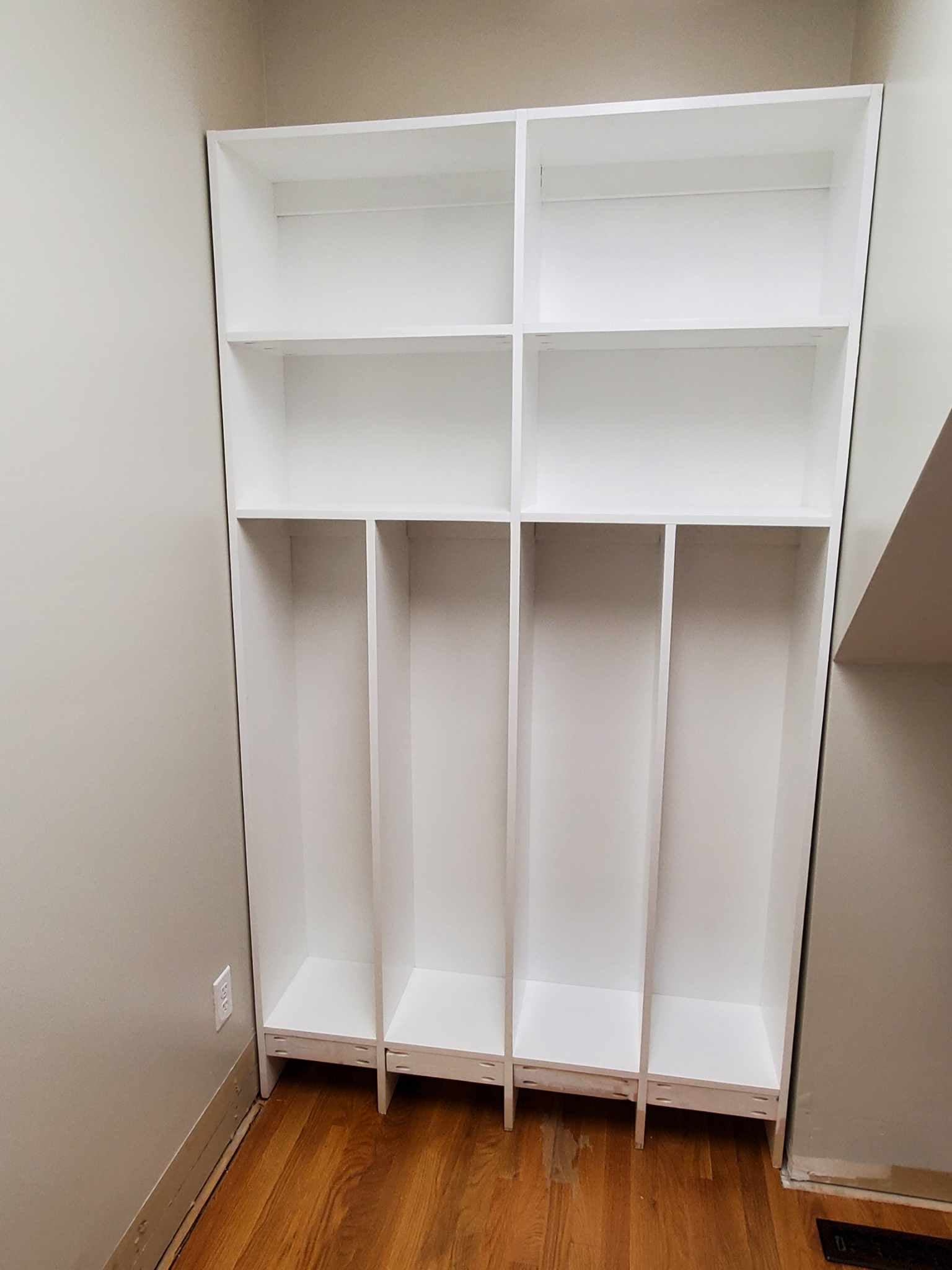To fill the gap between shelves and walls, use filler strips or decorative molding. They help close the space neatly.
Ensuring a polished look for your shelving unit involves addressing any gaps between the shelves and walls. Leaving this space unfilled can lead to a visually unappealing and incomplete look. However, with the help of filler strips or decorative molding, you can easily bridge the gap and give your shelves a cohesive and finished appearance.
We will guide you through the steps on how to fill the gap effectively, providing practical solutions for this common issue. With our tips, you can achieve a seamless and professional look for your shelves, enhancing the overall aesthetic of your space.
Options For Filling The Gap
When it comes to filling the gap between shelves and walls, there are several options you can consider. This article will explore the different methods you can use to fill this gap seamlessly and enhance the overall look of your space.
Fillers are a simple yet effective way to cover the gap between shelves and walls. These materials can be easily trimmed to fit the space and provide a clean finish.
Foam strips or wood shims are commonly used fillers that can be painted or stained to match the shelf color. Simply insert them into the gap for a snug fit.
Baseboards are another great option to fill the gap while adding a touch of elegance to the room. These mouldings come in various styles and sizes to suit your design preferences.
Measure the gap accurately and cut the baseboard to the required length. Then, attach it to the wall using nails or adhesive for a secure fit.

Credit: www.reddit.com
Using Fillers
Filling the gap between shelves and walls can be easily achieved using fillers. By choosing the right filler material, measuring and cutting it accurately, applying and sanding the filler, and finally painting or staining it, you can seamlessly blend shelves with the surrounding walls.
Choosing The Right Filler Material
- Opt for a paintable or stainable wood filler for a seamless finish.
- Consider the color and texture of the wall for a perfect match.
- Ensure the filler material is easy to work with and dries quickly.
Measuring And Cutting The Filler
- Measure the gap meticulously to cut the filler material to the right size.
- Use a sharp saw or utility knife to cut the filler accurately.
- Double-check the measurements before cutting to avoid errors.
Applying And Sanding The Filler
- Apply the filler using a putty knife, ensuring it fills the gap completely.
- Smooth the surface with sandpaper once the filler has dried completely.
- Remove any excess filler and sand until the surface is flush and even.
Painting Or Staining The Filler
- If using paint, choose a color that matches the surrounding walls.
- Apply a primer before painting for better adhesion and finish.
- For staining, select a stain that complements the wood of the shelves.
Installing Baseboards
When it comes to filling the gap between shelves and walls, one of the most effective and aesthetically pleasing solutions is installing baseboards. Baseboards not only provide a clean and finished look to your room but also help cover up any uneven edges or gaps. Let’s discuss the process of installing baseboards step by step.
Selecting The Perfect Baseboard
The first step in installing baseboards is selecting the perfect baseboard material that suits your aesthetic preferences and complements the style of your room. Baseboards come in various materials such as wood, MDF, PVC, or composite. Consider the durability, cost, and maintenance requirements of each material before making your choice. Ensure that the selected baseboard height is appropriate for your room’s ceiling height and complements the overall proportions of the space.
Measuring And Cutting The Baseboard
Accurate measurements are crucial for a successful baseboard installation. Begin by measuring the length of each wall where you plan to install the baseboard. Take into account any corners, angles, or obstacles that may require additional cuts or adjustments. Once you have the measurements, use a miter saw or a coping saw to cut the baseboard pieces at precise angles. To ensure a seamless fit, cut the miter angles at 45 degrees for standard corners and cope the joints for intricate corners.
Attaching The Baseboard To The Wall
After cutting the baseboard pieces to the correct lengths and angles, it’s time to attach them to the wall. Before installation, make sure the wall surface is clean and free from any debris. Apply a thin line of adhesive along the back of the baseboard and press it firmly against the wall, starting from the corner or one end of the wall. Use a level to ensure the baseboard is straight, and secure it with finishing nails or a nail gun. Repeat the process for each baseboard piece until all walls are covered.

Credit: www.reddit.com

Credit: www.pinterest.com
Frequently Asked Questions On How Do I Fill The Gap Between Shelves And Walls
How Can I Fill The Gap Between Shelves And Walls?
To fill the gap between shelves and walls, you can use wooden or plastic shims, caulk, or decorative molding. Measure the gap and select the appropriate material to fill it seamlessly, ensuring a neat and polished look.
What Are The Best Materials For Filling The Gap?
The best materials for filling the gap would include wooden or plastic shims, caulk, or decorative molding. These materials not only provide a sturdy fill but also enhance the aesthetics of the space.
Are There Any Tips For Filling The Gap Effectively?
To fill the gap effectively, ensure that you measure the gap accurately and select the appropriate material. Additionally, use a level to ensure that the shelves remain straight and the gap is filled seamlessly. A neatly filled gap provides a polished and professional appearance.
Is It Necessary To Hire A Professional For This Task?
Depending on your confidence and expertise, filling the gap between shelves and walls can be a DIY task. With the right tools and materials, careful measurements, and attention to detail, you can achieve a seamless and professional look without the need for professional assistance.
Conclusion
Filling the gap between shelves and walls is a simple yet important task for creating a polished and finished look in your space. By following the steps outlined in this blog post, you can achieve a seamless connection between your shelves and walls, enhancing the overall aesthetic appeal.
Whether you choose to use molding, caulk, or another method, taking the time to address this gap will greatly improve the visual impact of your shelves and bring a sense of completion to your room.
{ “@context”: “https://schema.org”, “@type”: “FAQPage”, “mainEntity”: [ { “@type”: “Question”, “name”: “How can I fill the gap between shelves and walls?”, “acceptedAnswer”: { “@type”: “Answer”, “text”: “To fill the gap between shelves and walls, you can use wooden or plastic shims, caulk, or decorative molding. Measure the gap and select the appropriate material to fill it seamlessly, ensuring a neat and polished look.” } } , { “@type”: “Question”, “name”: “What are the best materials for filling the gap?”, “acceptedAnswer”: { “@type”: “Answer”, “text”: “The best materials for filling the gap would include wooden or plastic shims, caulk, or decorative molding. These materials not only provide a sturdy fill but also enhance the aesthetics of the space.” } } , { “@type”: “Question”, “name”: “Are there any tips for filling the gap effectively?”, “acceptedAnswer”: { “@type”: “Answer”, “text”: “To fill the gap effectively, ensure that you measure the gap accurately and select the appropriate material. Additionally, use a level to ensure that the shelves remain straight and the gap is filled seamlessly. A neatly filled gap provides a polished and professional appearance.” } } , { “@type”: “Question”, “name”: “Is it necessary to hire a professional for this task?”, “acceptedAnswer”: { “@type”: “Answer”, “text”: “Depending on your confidence and expertise, filling the gap between shelves and walls can be a DIY task. With the right tools and materials, careful measurements, and attention to detail, you can achieve a seamless and professional look without the need for professional assistance.” } } ] }
